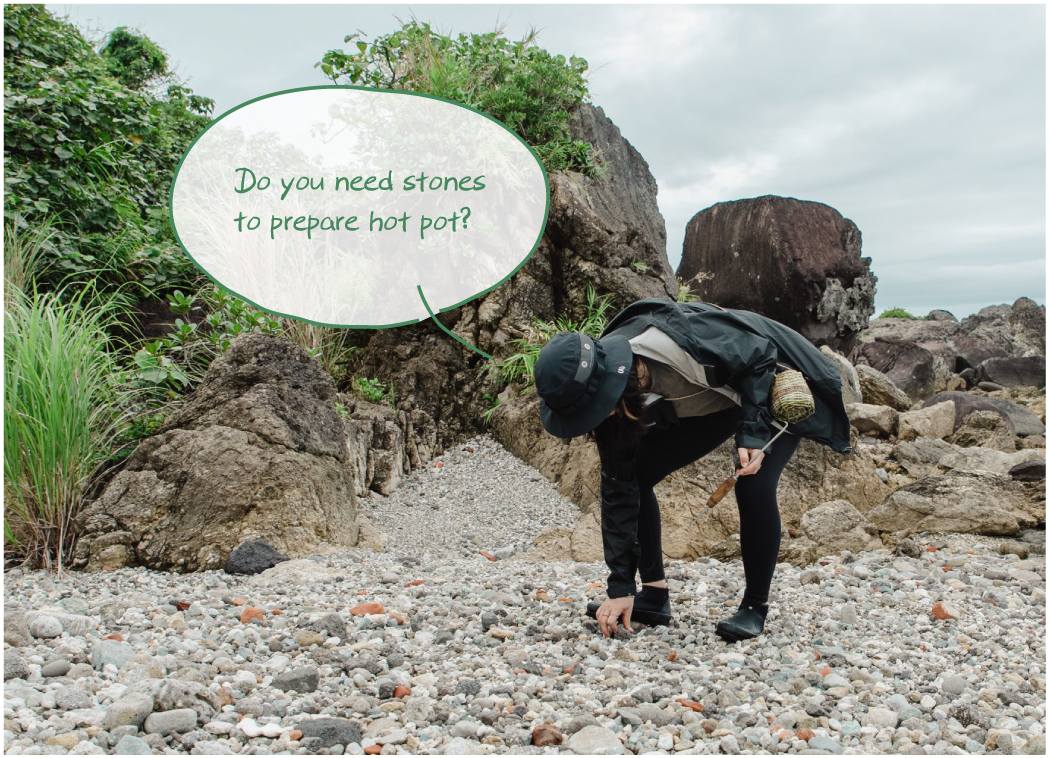To feed oneself, one has to make utensils first; to harvest on the foreshore, one has to weave a basket first! To prepare for the harvesting event in the afternoon, Akac Orat helped Kuo Pei-Hsuan weave a basket with whip vines in an family house, so that they could then collect the harvested mollusc and shellfish. It is just that weaving a basket requires manual dexterity, which might pose a challenge to Kuo, who tends to be rather energetic than calm and quiet.
Time to Test Dexterity and Patience
 Arrange 6 rattan strips in a criss-cross pattern to form the basket base. Weave another thinner rattan strip over and under the 6 rattan strips.
Arrange 6 rattan strips in a criss-cross pattern to form the basket base. Weave another thinner rattan strip over and under the 6 rattan strips.
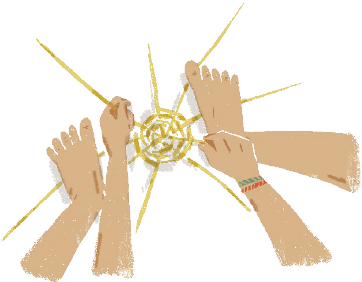
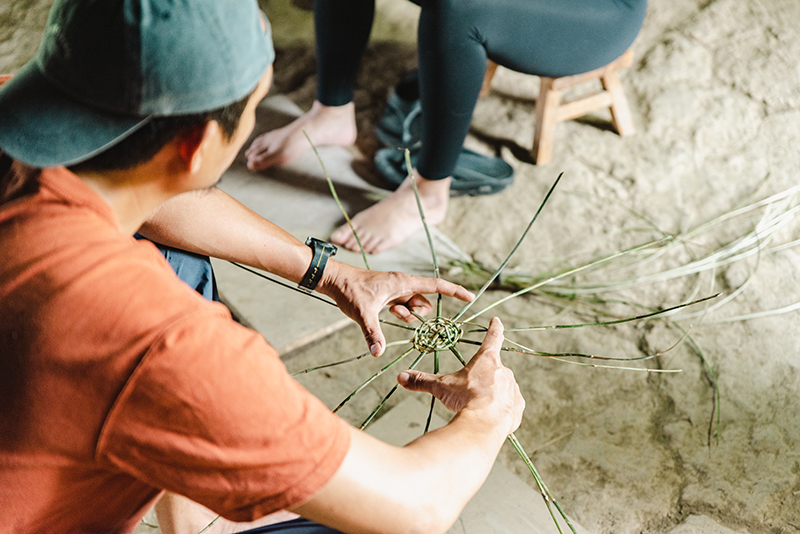
This is the moment when mastering the skill of using both hands and feet matters. If only hands are used to fix the position of the strips, the strips cannot be secured in place.
 Add another rattan strip to the basket base in order to move on to the second row by weaving the thinner strip firstly under and then over the base strip, repetitively.
Add another rattan strip to the basket base in order to move on to the second row by weaving the thinner strip firstly under and then over the base strip, repetitively.

 When weaving to the end of the first thinner strip, cross another new thinner strip over it to continue weaving. The addition of the new thinner strips is determined by the size of the basket. When the base is almost done, pull the strips upright towards the centre to create a bowl shape and proceed with the weave.
When weaving to the end of the first thinner strip, cross another new thinner strip over it to continue weaving. The addition of the new thinner strips is determined by the size of the basket. When the base is almost done, pull the strips upright towards the centre to create a bowl shape and proceed with the weave.
 To finish the basket, cross one of the seven base strips over the other on its right and tuck it into the horizontal strips over and under. Finally, make sure its end is placed on the inside of the basket. Repeat the same steps for the rest of the base strips.
To finish the basket, cross one of the seven base strips over the other on its right and tuck it into the horizontal strips over and under. Finally, make sure its end is placed on the inside of the basket. Repeat the same steps for the rest of the base strips.
There is over a dozen weaving methods in the Amis culture. The one introduced here is quite common, and not unique to the Amis.
 How we learned from the elders in the past is different from today’s step-by-step approach. The elders would say, “Learn by watching.” They would demonstrate, and sometimes we would spend the whole day watching. In our culture, we tend not to ask much, otherwise the elders would scold, “How come you do not watch at all? All you do is open your mouth and speak. Why do you not learn by doing?” Therefore, it is important to watch and observe in our culture. Now we spend a lot of time using smartphones, but when it is time to get work done with our hands, we have hand-eye coordination problems; therefore, our physical senses require development and training.
How we learned from the elders in the past is different from today’s step-by-step approach. The elders would say, “Learn by watching.” They would demonstrate, and sometimes we would spend the whole day watching. In our culture, we tend not to ask much, otherwise the elders would scold, “How come you do not watch at all? All you do is open your mouth and speak. Why do you not learn by doing?” Therefore, it is important to watch and observe in our culture. Now we spend a lot of time using smartphones, but when it is time to get work done with our hands, we have hand-eye coordination problems; therefore, our physical senses require development and training.
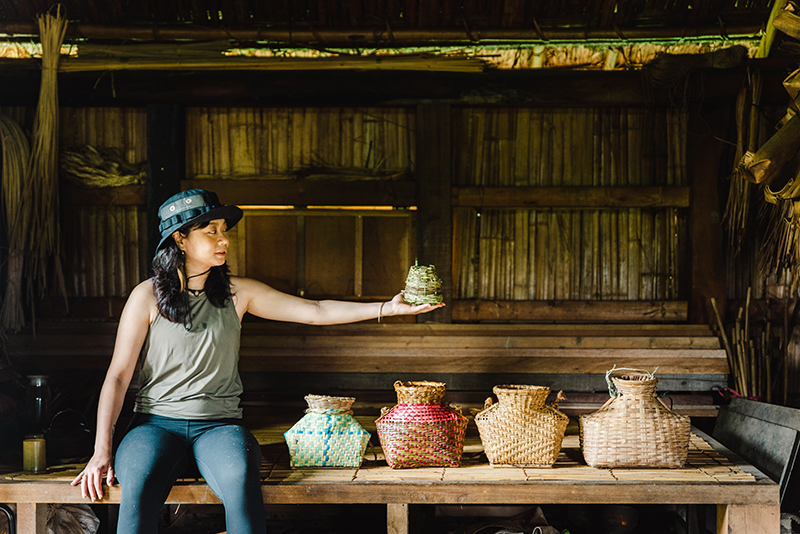
Kuo Pei-Hsuan photographed the basket she wove with the fish baskets made by Akac Orat.

Animals, Where are You? Do Not Cover Yourself Up.
In the Amis culture, there was a clear division of labour; men wove tools with bamboo and went hunting; women wove cloth and worked on the farm. Both, however, took on chores in the water. Why is going to the sea to play such an indispensable role to Amis people? The reason lies in a tradition called “Pakelang.” Now many people interpret it as a victory celebration banquet, but in effect, this tradition is organised to indicate an end to a crucial event and the beginning of another. When conducting Pakelang, Amis people need to dive in the sea as “water” implies “cleansing,” symbolising the removal of impurities and fatigue. As a result, in Pakelang, fish and shrimp are served to show that people have dived in the sea.
Akac Orat also pointed out the importance to observe the changes in waves when people harvest creatures on the beach. To ensure one’s safety in the natural environment, one has to be on high alert at all times and pay attention to wind and waves.
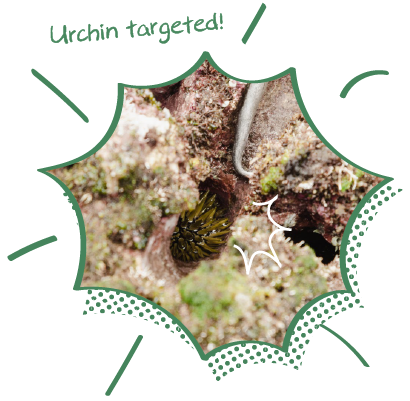
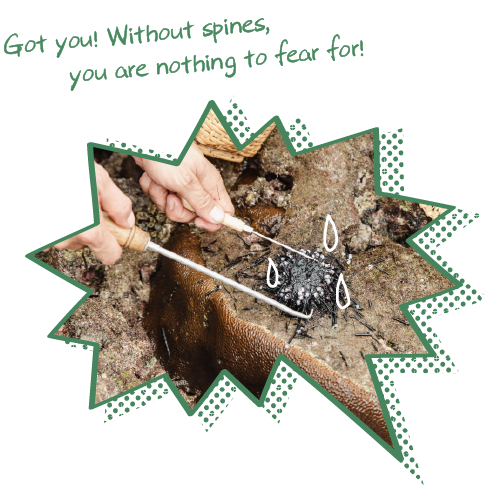
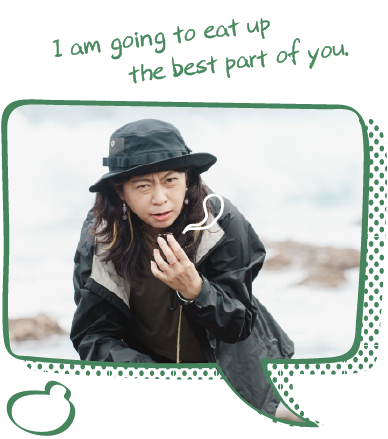

Even though the intertidal zones are rich in a variety of creatures, not all of them are edible. The characteristic cone, a species of sea snails, is one example. Since they are venomous, only part of their feet can be eaten. When you bring them home, do not put them in fresh water, otherwise they will stink. You can simply freeze them. Although most people eat shrimp and crabs, many crabs actually contain toxin. Along the east coast, probably only 5 species of crabs are edible.
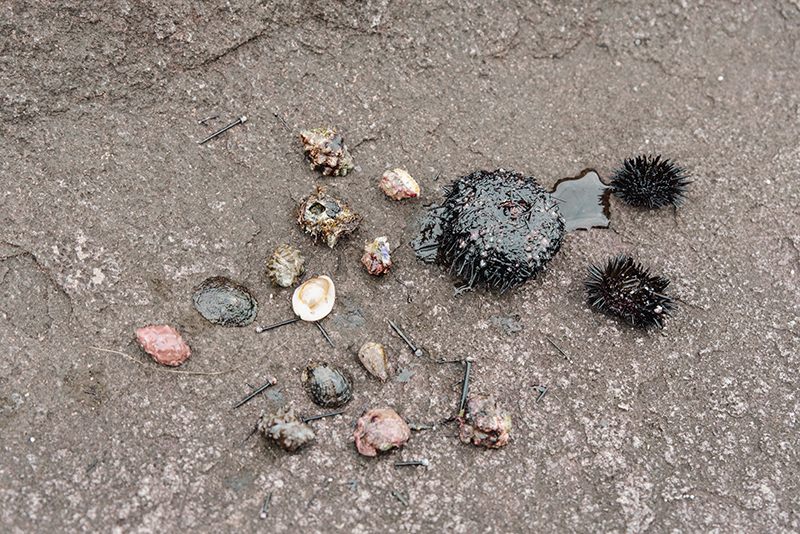
The creatures Kuo Pei-Hsuan harvested.
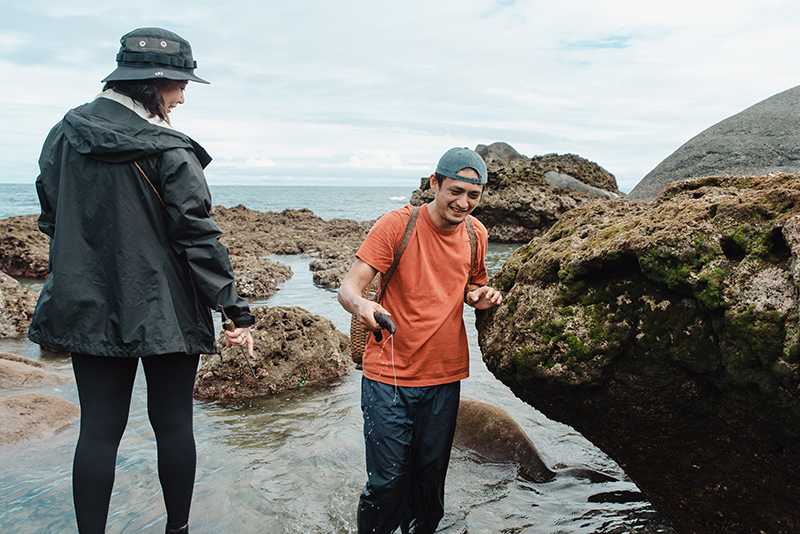
A sea cucumber shoots white silky threads.
Picking Up Stones for Hot Pot?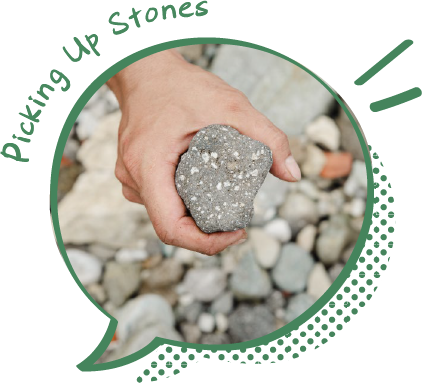
Akac Orat revealed that lunch for the next day was Amis-style stone hot pot, but prior to making it, picking up stones would be the first priority. Plus, it could only be Maifan stones. That is an interesting fact that has never been heard of before…
